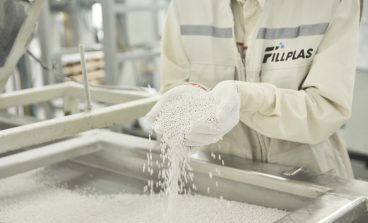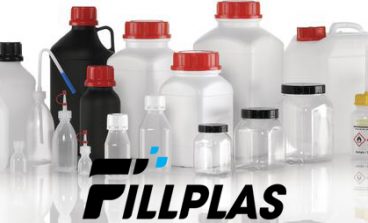
The term “nonwoven” became popular more than half a century ago when nonwovens were regarded as low-price substitutes for traditional textiles. However, today, the nonwoven fabric technology is the most modern method used in the branch of the textile industry. Nonwoven technology exists to approximate the appearance, texture, and strength of conventional woven and knitted fabrics due to their simple production stages, high efficiency of production, lower cost, and disposability. Multi-layer nonwoven composites, laminates, and three-dimensional nonwoven fabrics are commercially produced. Nonwovens combined with other materials have different chemical and physical properties. Therefore, nonwovens can be used in a wide variety of industrial engineering, consumer, and health-care goods. The commonly used fibers include natural fibers (cotton, jute, flax, wool), synthetic fibers (polyester (PES), polypropylene (PP), polyamide, rayon), special fibers (glass, carbon, nanofibers, bicomponent, superabsorbent fibers), etc…
Man-made fibers (synthetic fibers) are the most widely used in the nonwoven industry. Owing to impurities and higher costs, natural fibers are of minor importance for the production of nonwovens.
We will study some mand-made fibers as following.
Polyester
As its name indicates, this type of fiber consists of macromolecules of esters which are chemicals made of acids and alcohol. If any of these basic molecules are combined, they will form polyesters.
Properties of polyester
The physical properties of polyester fibers are important while producing nonwoven materials. For example, the lengths of cut are adapted to the respective manufacturing procedure. Fibers are also available in different luster and cross-sectional forms.
They are inexpensive, easily produced from petrochemical sources, and have a desirable range of physical properties. They are strong, lightweight, easily dyeable and wrinkle-resistant, and have very good wash wear properties. Therefore, it is mostly used in nonwoven production.
Polyester is less flammable than cellulosic fibers because it melts while coming in contact with the flame.
Among the bi-component fibers, polyester is the most used fiber. Because of its increasing strength and soft hand of the nonwoven fabric, polyester is used in continuous bi-component filaments having a sheath component made of linear low-density polyethylene (PE) and a core component made of polyester. The tensile strength of the fabrics is improved remarkably by the bi-component filaments and depends on the linear low-density polyethylene /polyester ratio. The ultrasonically bonded polyester/polypropylene blend like Matarh’s Ultraskin, the protective clothing, is said to protect wearers from the rain while offering the breathability needed to provide comfort.
Most of the insulation and industrial products are manufactured from synthetic and inorganic fibers by dry- and wet-laid methods. Nonwoven polyester fiber mats are used to produce electrical insulation laminates and electrical tape backing appliances. Polyester and high-temperature-resistant m-aramid nonwoven mats are used as a cost-efficient interchange for aramid paper for insulation composites.
Polyester fiber composites are widely used as filtration media. The layers of composite structure give excellent tear strength, a smooth, fiber-free surface, and edge stability. These products supply higher filtration efficiencies than calendared spun-bonded media.
Polyester fibers are used inside seat cushions, back pillows, mattresses, and waterbeds, decorative and throw pillows, outdoor furniture, and even hand-stuffed custom upholstery in fiberfill applications.
Cross-sectional polyester fibers are used in the following three major areas:
– Apparel: Every form of clothing;
– Home Furnishings: Carpets, curtains, draperies, sheets and pillowcases, wall coverings, and upholstery; and
– Other Uses: Hoses, power belting, ropes and nets, threads, tire cords, auto upholstery, sails, floppy disk liners, and fiberfill for various products including pillows and furniture.
Polypropylene
The fibers from polypropylene were introduced to the textile arena in the 1970s and have become an important member of the rapidly growing family of synthetic fibers.
Polypropylene is generally available as chips or granules which are white in color and are semicrystalline. The fibers are produced by a larger variety of processes than any other melt-spun fibers.
Polypropylene has established itself as a very useful industrial and household fiber. However, it has not made a very significant impact in the apparel sector mainly due to its hydrophobicity lock of dyeability and slightly waxy handle. Polypropylene nonwovens are increasingly being used as filter fabrics for wet filtration in the chemical and pharmaceutical industries. Industrial applications also include medical and surgical disposables.
Advantages of PP fibers for nonwoven fabrics are as follows:
- Surface smoothness and hardness,
- Resistance to micro-organisms,
- Chemical resistance,
- Inherent hydrophobicity that can be modified using fiber finishes and other treatments,
- High tenacity,
- High shrinkage,
- Low melting point leading to significant energy conservation,
- Low density and specific gravity enabling lightweight fabrics to be produced,
- Good abrasion resistance,
- Good resilience,
- Having good bulk and cover, and
- Good stain and soil release.
Disadvantages of polypropylene fibers are as follows:
- Difficult to dye after manufacturing,
- High crystallinity and poor thermal conductivity,
- Poor UV and thermal stability (requires expensive UV stabilizers and antioxidants to overcome this problem,
- Poor resilience compared to PET and nylon,
- Having poor adhesion to glues and latex, and
- Flammable and melts and burns like wax.
There are only half-dozen manufacturers of polyester spun-bonded fabrics in the world, and the bulk of such fabrics are made from both isotactic polypropylene polymers. This is conduct by the cost and ease of procedure of polypropylene. Polypropylene spun-bonded fabrics are used in a variety of end uses, which include absorbent product coverstock markets, home furnishing, and automotive markets because of the lowest cost, and in low polypropylene nonwoven fabric applications.
Polypropylene is also used extensively in sheath-core configuration to take advantage of the lower melting point of the former in thermally bonded spun bonds; the polypropylene core fiber retains its fibrous character and excellent physical properties. Even though there is only a very small window of temperature at which polypropylene will melt for bonding purposes, the fabrics made in this manner do not suffer any appreciable loss of fiber properties.
Fillplas has materials for nonwoven products. Please find our website for more information.



